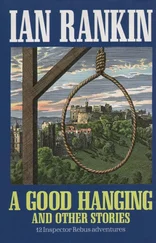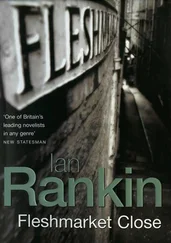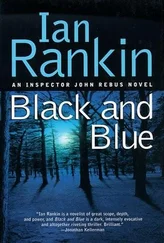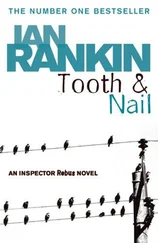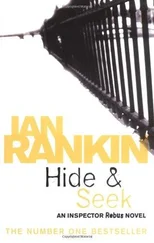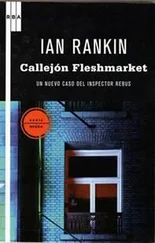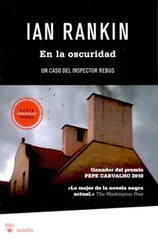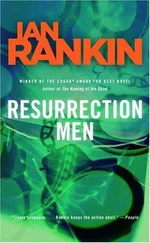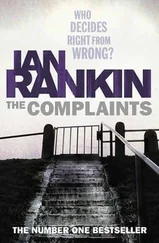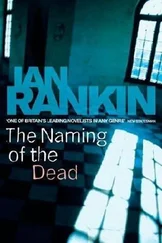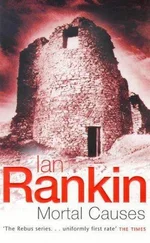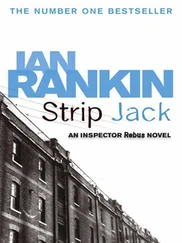Ian Rankin
Knots And Crosses
To Miranda without whom
nothing is worth finishing
The nineteenth of March 1985 was a big day for me. I was a postgraduate student at the University of Edinburgh, studying the novels of Muriel Spark. My thesis, however, was proving less important to me than my own writing. I’d started with poetry, then found some minor success with short stories. A first novel had failed to find a publisher, but my second attempt had just been given the thumbs-up by a small Edinburgh-based outfit called Polygon. That novel was titled The Flood, and on 19 March I went to the Polygon offices to sign my first ever book contract. I recorded the event in my diary, where, however, it was reduced to second billing after the following: ‘It’s happened. An idea for a novel (crime thriller) which started as one situation and has blossomed into a whole plot. I’ve not written any of it yet, but it’s all there in my head, from page one to circa page 250.’
By 22 March I was working on this new story, and two days later recorded that ‘it needs a working title; I’m going to give it Knots amp; Crosses’. I certainly remember sitting in a chair in my bedsit, directly in front of the gas fire, and toying with the pun of noughts/knots and crosses. Rebus, it seems to me now, entered as a fully formed character, complete with estranged wife, young daughter and fragile sanity When I started writing, I did so on an electric typewriter, at the table by the window I stared from that window at the tenement opposite, and decided that Rebus would live there, directly across from my own digs at 24 Arden Street, Marchmont, Edinburgh.
By late October, I had finished the second draft of the book: ‘two hundred and ten pages of sixty per cent satisfactory prose’. I had an agent by this time, and she suggested some changes, the most substantial of which involved cutting a large part of the central flashback section. This I did, making the book leaner, but no less potent.
Knots amp; Crosses is a pretty nasty book, dealing as it does with a serial killer who preys on children. I’m fairly sure I meant it to be a contemporary reworking of Dr Jekyll and Mr Hyde. Having studied Stevenson’s masterpiece as part of my thesis, I was intrigued that he chose to set the story in London. Yet it remains a very Scottish novel, based as it is (at least partially) on the real-life Edinburgh character Deacon William Brodie, who was gentleman by day criminal by night.
At the time, I had no interest in reading detective fiction, and no knowledge of police procedure. I also had no notion that Knots would be the first book of a series. This led me blithely to give Rebus a complex personal history and a name which was one of many in-jokes in the book (a rebus being a pictorial puzzle). In fact, rereading the book now, I find myself blushing at the number of literary puns and references (including nods to Spark, Mailer, Anthony Burgess and Thomas Pynchon). Rebus himself is too well-read, quoting from Shakespeare and passionate about Dostoevsky He thinks like the student/novelist who created him, rather than as a real cop. The sky is described as being ‘dark as Wagnerian opera’, while the phrase ’the manumission of dreams’ sent me (in 2005) to a dictionary I’m guessing it was a word I’d only just learned in 1985, and I was keen to show it off. I was a young man in love with language, striving for a voice and sometimes overreaching.
The story is set in 1985. At that time, most of the shops on Princes Street closed on a Sunday There was an ABC cinema (now an Odeon) on Lothian Road and a Mr Boni’s ice-cream parlour (now defunct) at Tollcross. People used telex machines, but no one had a mobile phone. And when Rebus sought out a bar, he tended to choose one with larger quarter-gill measures (since replaced by their metric equivalent). Already Knots amp; Crosses feels like a historical document, written in and about an Edinburgh that no longer exists. As for the book’s hero, well, he’s changed in time as well. In this, his first outing, he listens to jazz mainly, using a Nakamichi cassette deck, probably the same one my girlfriend Miranda had bought for me. Later on, I would switch his preference to rock music. And though I’ve never really described him physically in any of the novels, here we learn that he has brown hair and green eyes (same as me). He’s also meant to be a possible suspect, which is why I make him so troubled, suffering weird flashbacks and with a spare bedroom in his flat that’s kept permanently locked.
Some of the secondary characters in Knots would become useful to me in future books. The journalist Jim Stevens would play a role in a non-Rebus novel ( Watchman ) before reappearing in the series. Rebus’s brother would return, as would his fellow detective Jack Morton. And Gill Templer is still around, her relationship with Rebus coloured, even after all these years, by the events of this first novel. In later books, of course, I take Rebus into real police stations and real pubs. But the Edinburgh of Knots is altogether more fictive: Rebus’s police station is sited on a non-existent street, and bars such as the Sutherland remain figments of my imagination.
One other thing about Rebus: he dies at the end. Not in the final draft, obviously but that was my original plan. If I’d stuck to it, I don’t know what I’d be doing now. The book climaxes in some tunnels beneath the Central Library on George IV Bridge. There may or may not be tunnels there. However, beneath the National Library (right across the street from the Central) there are certainly tunnels — I know because we postgraduate students were given a tour of them … and, as Muriel Spark says, nothing is ever lost to an author.
Since I had no idea how the police went about investigating a murder, I did what any good research student would have done: wrote to the Chief Constable. He took pity on me and directed me to Leith police station, where two wary detectives answered my questions, and added my name to their database, just in case I had some darker ulterior motive. In my duffel coat and Doc Marten boots, a Dr Who scarf wrapped around me, I probably wasn’t their idea of a novelist. Sometimes even now I look in the mirror and am forced to agree.
Knots was finally published in London by The Bodley Head (now also defunct) on 19 March 1987, exactly two years to the day since I’d had the initial idea. The cover was a drawing of a game of noughts and crosses, played with knotted pieces of twine and crosses made from matchsticks. As for the author photo, the less said the better. By this time, I was married, living in London, and working at Middlesex Polytechnic. I went into work as usual, and saw no reviews of the book in any of the day’s newspapers. Forty-eight hours later, I headed to Edinburgh to spend some weeks at a writers’ retreat. There seemed no great fuss about the book. Sales would continue to be poor, with few reviews. I said as much in my diary: ‘Knots has had less publicity than Flood.’ So much for my fledgling career as a crime writer. I was by this time working on a London-based spy novel called Watchman, and had plans to be the next le Carre. Rebus was history, as far as I was concerned.
But that would change.

April 2005
The girl screamed once, only the once.
Even that, however, was a minor slip on his part. That might have been the end of everything, almost before it had begun. Neighbours inquisitive, the police called in to investigate. No, that would not do at all. Next time he would tie the gag a little tighter, just a little tighter, just that little bit more secure.
Читать дальше


